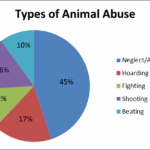In recent history, the topic of animal cruelty has gained unprecedented attention, culminating in significant legislative advancements. The journey toward establishing a federal law addressing such egregious acts against animals reflects a growing societal acknowledgment of their sentience and the complex ethical ramifications of their treatment. Federal acknowledgment of animal cruelty as a criminal offense did not emerge overnight, but rather, it was the product of continuous advocacy, tragic events, and vibrant public discourse.
The movement towards federal legislation can be traced back to various grassroots and national animal welfare organizations that have relentlessly campaigned for stricter laws. These organizations have galvanized public sentiment by effectively utilizing social media platforms, organizing impactful protests, and disseminating harrowing stories that highlight the plight of abused and neglected animals. The stories are often visceral, portraying the stark reality faced by countless creatures, resonating deeply within the hearts of citizens and catalyzing a demand for systemic change.
In 2010, a galvanizing moment arrived with the introduction of the Animal Crush Video Prohibition Act. This act sought to criminalize the creation and distribution of videos depicting the abuse of animals. It was a pivotal point, laying a foundational stone for the principles that would later underpin broader animal cruelty legislation. The act was spurred by the emergence of disturbing videos that depicted heinous acts committed against various animals for the sake of entertainment—a repugnant display that warranted widespread condemnation.
Despite its narrow focus, the Act was significant as it drew national attention and rallied support from individuals and organizations alike. It showcased the inherent flaws in the existing legal framework, where animal cruelty was either overlooked or severely under-punished. The fervor surrounding this initial legislation illuminated the undeniable reality: animals are sentient beings deserving of protection under the law.
As this momentum built, it became evident that piecemeal legislation, while important, was insufficient to address the multifaceted nature of animal cruelty. Advocates soon turned their sights to a more comprehensive approach. Herein lies the impetus behind the distinct push for a federal anti-animal cruelty law—a desire for an expansive set of protections spanning across all states. The concept of establishing a baseline of legal rights for animals was no longer merely aspirational; it became a palpable rallying cry for activists nationwide.
In 2019, the culmination of years of advocacy bore fruit with the passing of the PACT Act (Preventing Animal Cruelty and Torture Act). This landmark legislation marks a paradigm shift in the legal landscape, extending federal jurisdiction over the most heinous acts of animal cruelty. The PACT Act closed the loopholes that had allowed for such inhumane acts to persist without stringent repercussions. Under this law, individuals found guilty of animal cruelty face felony charges—signifying an essential shift from viewing animal cruelty as a misstep to recognizing it as a serious crime.
The passage of the PACT Act represents not only a legislative triumph but also a profound shift in societal values regarding the welfare of animals. It reflects an evolving perspective that demands accountability for those who inflict suffering on the most vulnerable among us. This change is indicative of a society increasingly fatigued by brutality and increasingly inclined toward compassion. The enactment of the PACT Act is an acknowledgment that cruelty against animals cannot be tolerated—neither in entertainment nor in any form.
However, the enactment of such legislation is only the beginning. One cannot overlook the nuances of implementation and enforcement that accompany any new law. While the PACT Act provides a robust framework for prosecuting acts of cruelty, its effectiveness is contingent upon the commitment of federal and state authorities to enforce it rigorously. This necessitates not only a change in statutes but a cultural shift within law enforcement, ensuring that instances of animal cruelty are taken seriously and resources allocated to investigation and prosecution.
The journey towards animal welfare is far from complete. Numerous challenges linger on the horizon, posing questions about the balance between personal freedoms and animal rights. Issues such as factory farming practices, animal testing, and the treatment of companion animals still demand scrutiny and advocacy. Therefore, while the passage of the PACT Act is commendable, it is imperative for advocates to continue their efforts. This legislation can act as a catalyst, igniting broader discussions and further legislative initiatives aimed at the comprehensive protection of animals.
As society traverses this evolving landscape, it becomes increasingly evident that the discourse surrounding animal rights is no longer confined to niche circles of activists. People from all walks of life are awakening to the ethical implications of animal cruelty. Awareness breeds change, and the PACT Act serves as a testament to the power of collective action fueled by a profound sense of empathy. Perhaps, in the near future, we will witness the ethical treatment of all animals enshrined not only in law but also ingrained in societal consciousness—a world transformed, where compassion prevails over cruelty.
The legislative journey surrounding animal cruelty has been labyrinthine, characterized by setbacks and triumphs alike. However, thanks to concerted efforts and the unwavering resolve of advocates, a significant stride has been made in recognizing and addressing the plight of animals in our society. This ongoing movement promises a future where respect for animal life becomes a normative expectation, leading to a world defined not by suffering but by kindness and stewardship.



